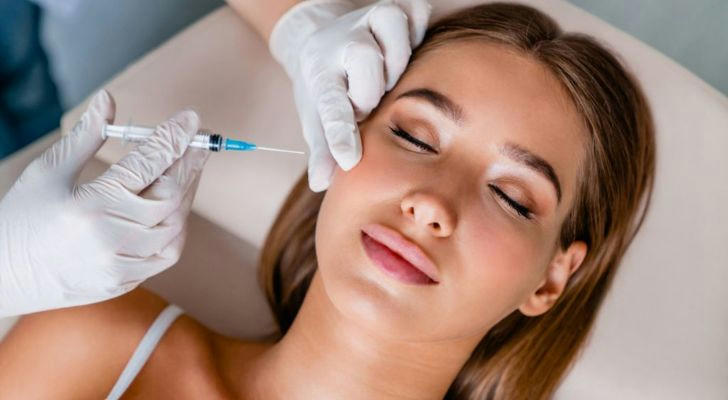The Effects of Botox: Benefits, Risks, and What to Expect
Botox has become one of the most popular cosmetic treatments in America, known for reducing wrinkles and fine lines. But beyond its aesthetic uses, Botox is also applied in various medical conditions. Understanding its benefits, potential risks, and realistic expectations can help individuals make informed decisions.

What Is Botox?
Botox is a neurotoxin derived from the bacterium Clostridium botulinum. In small, controlled doses, it temporarily paralyzes muscles by blocking nerve signals. This muscle relaxation smooths out wrinkles and prevents new lines from forming, typically lasting three to six months.
Botox is commonly used in:
Cosmetic procedures – Reducing wrinkles, crow’s feet, and forehead lines.
Medical treatments – Managing migraines, muscle spasms, excessive sweating, and even overactive bladder.
The Positive Effects of Botox
Reduces Wrinkles and Fine Lines
The most well-known benefit of Botox is its ability to smooth wrinkles. By relaxing facial muscles, Botox softens dynamic lines caused by repeated facial expressions such as smiling, frowning, and squinting. The most common treatment areas include:
- Forehead lines
- Crow’s feet (around the eyes)
- Frown lines (between the eyebrows)
Botox typically takes effect within a few days and lasts about 3–6 months before needing a touch-up.
Helps with Chronic Migraines
Botox is FDA-approved for treating chronic migraines. It works by blocking pain signals in the nerves, reducing the frequency and severity of migraines. Many patients who receive Botox for migraines report experiencing fewer headaches and an improved quality of life.
Reduces Excessive Sweating (Hyperhidrosis)
For people who suffer from excessive sweating, Botox can be life-changing. It blocks the nerve signals responsible for activating sweat glands, significantly reducing sweating in areas like the underarms, palms, and feet. The effects last for about 6–12 months.
Treats Muscle Spasms and Disorders
Botox is often used to treat conditions involving muscle tightness and spasms, such as:
- Cervical dystonia (a neurological disorder causing severe neck and shoulder muscle contractions)
- Blepharospasm (uncontrollable blinking)
- Spasticity in people with neurological disorders like cerebral palsy
By relaxing overactive muscles, Botox can relieve discomfort and improve mobility.
Manages Overactive Bladder
Botox injections can help individuals with overactive bladder by relaxing the bladder muscles, reducing the urgency and frequency of urination. It is particularly beneficial for people who haven’t responded well to other treatments.
Potential Side Effects and Risks of Botox
While Botox is generally safe when administered by a trained professional, it does have potential side effects. These can range from mild to severe, depending on the individual and the treatment area.
Temporary Bruising and Swelling
One of the most common side effects of Botox injections is mild bruising, swelling, or redness at the injection site. This typically subsides within a few days.
Muscle Weakness or Drooping
Botox works by relaxing muscles, but if injected improperly, it can cause unintended muscle weakness. For example:
- Drooping eyelids (ptosis) if Botox spreads beyond the intended area.
- Uneven facial expressions if one side of the face is more affected than the other.
These effects are temporary but can last for several weeks until the Botox wears off.
Headaches and Flu-Like Symptoms
Some people experience mild headaches or flu-like symptoms after Botox injections. These usually resolve within a few days.
Difficulty Swallowing or Speaking (Rare Cases)
If Botox is injected in areas near the throat or neck, it may temporarily affect speech or swallowing. This is more common in medical treatments rather than cosmetic ones.
Allergic Reactions (Rare but Serious)
Severe allergic reactions to Botox are rare but possible. Symptoms may include:
- Difficulty breathing
- Swelling of the face or throat
- Rash or itching
If you experience any of these symptoms, seek medical attention immediately.
What to Expect from a Botox Treatment
Before the Procedure
Choose a qualified, experienced medical professional to minimize risks.
Avoid alcohol and blood-thinning medications (such as aspirin) for a few days before treatment to reduce bruising.
Discuss your medical history and any allergies with your provider.
During the Procedure
The treatment typically takes 10–20 minutes.
A fine needle is used to inject Botox into specific muscles.
There is little to no downtime, and you can resume most activities immediately.
After the Procedure
Avoid rubbing or massaging the treated area for at least 24 hours to prevent spreading the toxin.
Stay upright for a few hours and avoid strenuous exercise for the rest of the day.
Results usually appear within 3–7 days, with full effects visible in about two weeks.
Who Should Avoid Botox?
Botox is not suitable for everyone. You should avoid Botox if:
- You are pregnant or breastfeeding.
- You have a neuromuscular disorder (such as ALS or myasthenia gravis).
- You have a history of allergic reactions to botulinum toxin.
Always consult with a doctor before undergoing Botox treatment, especially if you have underlying medical conditions.
Final Thoughts: Is Botox Right for You?
Botox can provide incredible benefits for both cosmetic and medical purposes, helping people feel more confident and improving their quality of life. However, like any medical procedure, it comes with potential risks and side effects.
If you’re considering Botox, weigh the benefits against the risks and consult a qualified professional to ensure a safe and satisfying experience. When done correctly, Botox can be a highly effective solution for reducing wrinkles, managing medical conditions, and enhancing overall well-being.
